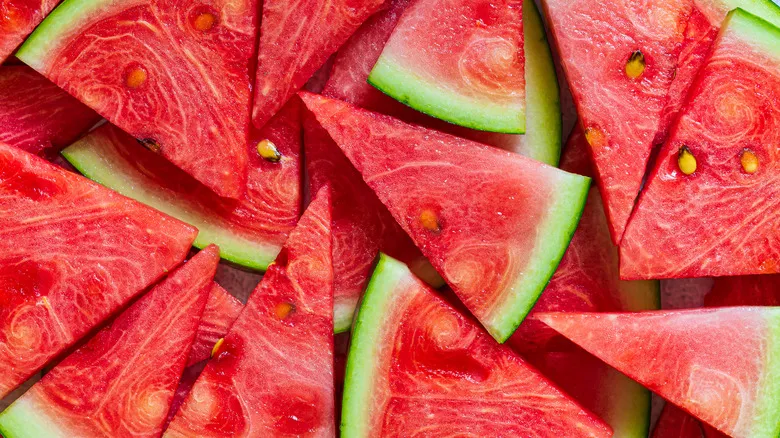1. Choose a watermelon according to your needs
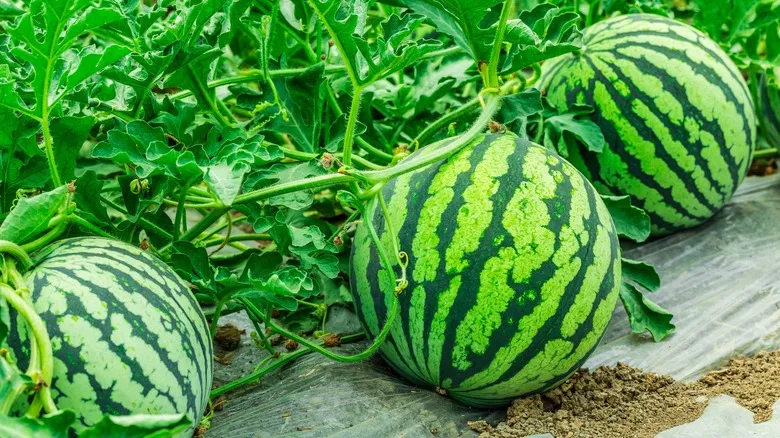
Regardless of how you intend to enjoy your watermelon, its freshness begins with selecting the right one. Picking the ideal watermelon differs from choosing other melons like cantaloupe or honeydew, as each type has its own unique guidelines. Therefore, don’t apply the same methods across different varieties.
When it comes to watermelon, prioritize weight. Compare several options and opt for the heaviest one, as this typically indicates greater juiciness and sweetness. Additionally, examine the spot where the melon rested on the ground; it should be a light yellow or cream color, rather than white (indicating it’s underripe) or dark yellow (suggesting it’s overripe). Finally, give it a firm tap with your hand and listen for a hollow sound.
Keep in mind that farmers often harvest melons at their peak ripeness for local sales at stores, farmers' markets, or u-pick farms. However, for those that need to be transported over longer distances, they are often picked slightly early, during the "half-slip" stage, to endure the journey better. If you need to carry your watermelon for a while, such as on a camping trip, select one that is less ripe to avoid it becoming mushy. Conversely, if you plan to consume it soon, use the aforementioned tips to find the ripest option available.
2. Wash your watermelon
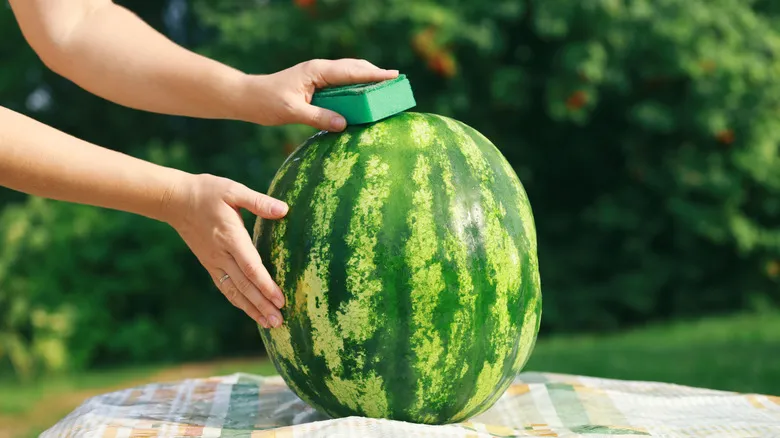
The positive aspect is that watermelon features a smooth rind rather than a pitted surface, which is more prone to collecting dirt and pathogens. However, the downside is that microorganisms can still survive on the watermelon’s surface, so it’s essential to wash the melon as soon as you bring it home. This practice helps prevent the transfer of any contaminants from the rind to the clean fruit when you cut it.
To wash a melon easily, simply place it in the sink and run cool water over it. The U.S. Food and Drug Administration (FDA) advises against using soap or commercial produce washes; instead, they recommend scrubbing the watermelon with a produce brush if needed. Some sources also suggest using vinegar for cleaning. To do this, fill the sink with cool water and add ½ cup of 5% distilled white vinegar for every 20 cups of water. You may need to rotate the melon while scrubbing to prevent it from floating and moving around.
3. Store it at room temperature

Whenever you can, it's best to serve watermelon at room temperature. While chilled watermelon is delicious, refrigeration can diminish the levels of lycopene—the compound that gives it that vibrant red hue. This is unfortunate, as lycopene is a potent antioxidant that helps combat free radicals and prevent disease, and we want to preserve it. Additionally, storing watermelon in the fridge can alter its flavor and texture, making the flesh grainy and the juice watery.
Refrigeration can also shorten the lifespan of your watermelon, reducing its shelf life from two to three weeks to just one week. If possible, keep the watermelon at room temperature for as long as you can. However, there's no need to worry if you chill it for a few hours before serving; this brief period won't significantly affect its structure. Just take it out once it's cold and enjoy!
4. Avoid sunlight
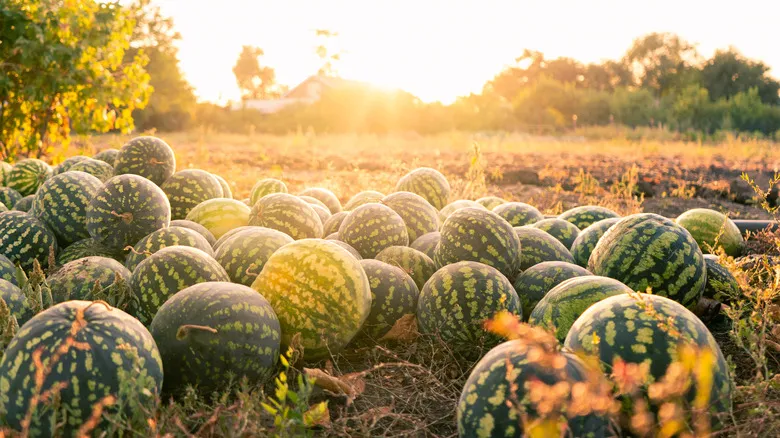
Just as we use gallery glass to protect artwork and store spices in a dark cabinet, it's important to keep watermelon out of direct sunlight. While sunlight can enhance sweetness and aid ripening in the field, it doesn't extend the storage life of the melon once you bring it home. Why is that? It's an intriguing question.
Sunlight has antimicrobial properties and is being researched to help reduce foodborne illnesses in produce. However, it can also accelerate the decomposition of organic matter, as noted in a study published in Oecologia. This phenomenon is referred to as "photodegradation." If that sounds like the opposite of photosynthesis, that's because it essentially is. Heat can cause watermelon flesh to become dry and fibrous, potentially shortening its shelf life.
To prevent this from happening to your watermelon, try to find a dark storage area if possible. Cupboards and corners of countertops work well. If a completely dark spot isn't available, a countertop with indirect light will suffice. Just be cautious of direct sunlight.
5. Pop it in the fridge once it begins to get old
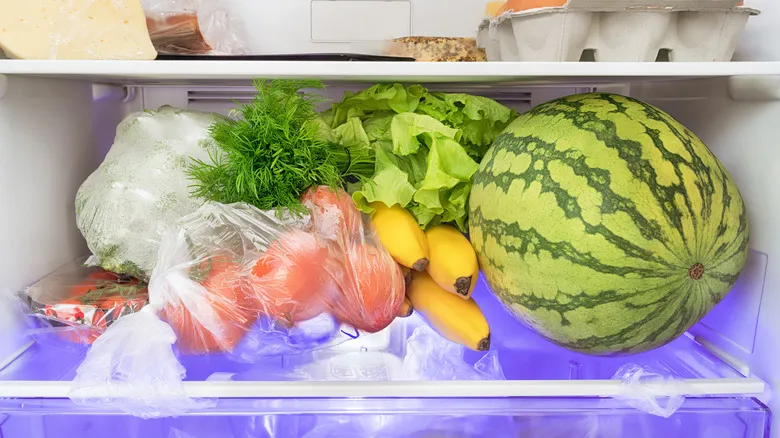
Watermelon doesn't continue to ripen once it's picked; it halts the ripening process immediately. However, it can still become softer over time, which is essentially a more pleasant way of saying it may turn mushy. You can slow this softening by placing the melon in the refrigerator, which can prolong its freshness by an additional two to three weeks beyond how long you've already had it. Keep in mind that while it won't spoil, its flavor and texture may diminish somewhat.
If you're uncertain about when to refrigerate your melon, aim to do so within seven to ten days at most. Simply place it in the fridge without covering it. If possible, set your fridge to a slightly warmer temperature to help maintain the melon’s quality for a longer period. This will vary depending on the season and the other items stored in your fridge. According to the FDA, the safest maximum temperature for your refrigerator is 40°F.
6. Put it in the warmest part of the fridge
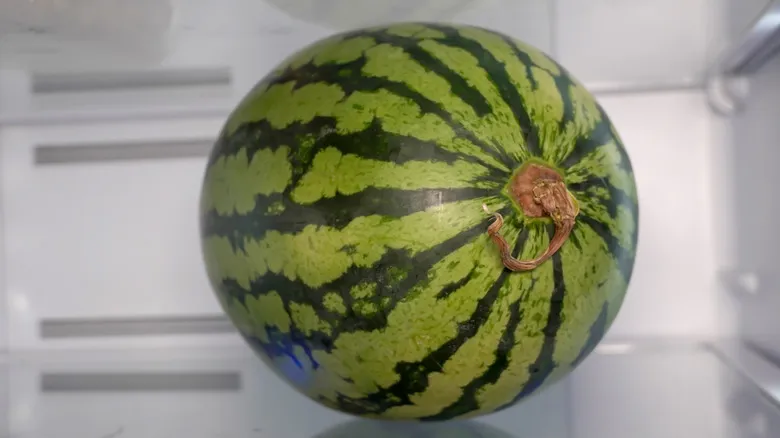
To maintain the quality of a watermelon, it's best to avoid placing it in the coldest section of your refrigerator. The location of this area can differ based on the model and age of your fridge, but there are some general spots to steer clear of if you want to keep your watermelon fresh for a longer time.
One common cold spot is near the evaporator fan, which distributes cold air throughout the fridge. Additionally, the back (farthest from the door) and the bottom (where cold air tends to settle) are typically colder areas. If your fridge has an ice maker, its location might also be the coldest part. Regardless, it's advisable to keep your watermelon away from these areas, as you may notice ice forming on your food stored there.
If you're uncertain about which part of your fridge is the coldest, you can use a portable room thermometer to check. Place it in various locations to determine whether the top near the freezer, the bottom where the air collects, or another area is the coldest.
7. If your watermelon was purchased refrigerated, refrigerate it
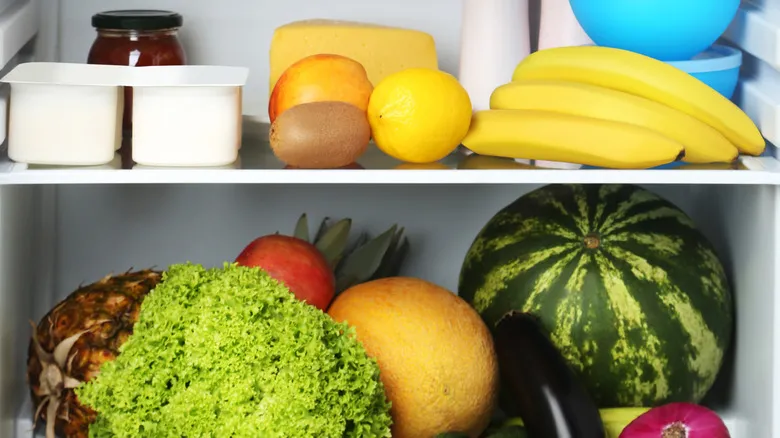
Once a watermelon has been chilled in the refrigerator, it should not be returned to room temperature. This process is known as "breaking the cold chain," which can result in undesirable changes as the watermelon warms up. However, if you're ready to enjoy it and prefer it slightly less cold—especially if you have sensitive teeth—it's perfectly fine to let it sit on the counter for an hour or two. Just be cautious not to exceed that time, as food should not remain in the 40-140°F danger zone for more than two hours. This brief warming won't harm the fruit and may even enhance its sweetness due to how our taste buds function.
Keep in mind that your watermelon was initially refrigerated, so its two- to three-week shelf life has already begun. Monitor its condition closely, and be particularly mindful of areas in the fridge where freezing might occur, which can happen in a very cold refrigerator. If the temperature drops below 32°F, watermelons can lose their color, develop off-flavors, and become pitted.
8. Storing it in a cooler is even better

The ideal storage temperature for watermelon is actually warmer than refrigerator temperatures, ranging from 50°F to 59°F. If you have a basement or root cellar that stays cool, it's best to store your watermelon there until you're ready to enjoy it. Alternatively, after keeping your watermelon on the counter for seven to ten days, you can transfer it to a cooler filled with ice. Be sure to use towels to prevent direct contact with the ice.
This method can help extend its freshness for up to three weeks. If you're heading out, especially on a camping trip where you'll have a cooler available, this approach is preferable to refrigeration. Fun fact: you can even cook rice, potatoes, and meat inside a watermelon over a campfire, making it a handy cooking vessel for your camping adventures. Just eat the fruit, hollow out the rind, and voilà: a disposable cooking pot!
9. Wrap the cut end in plastic
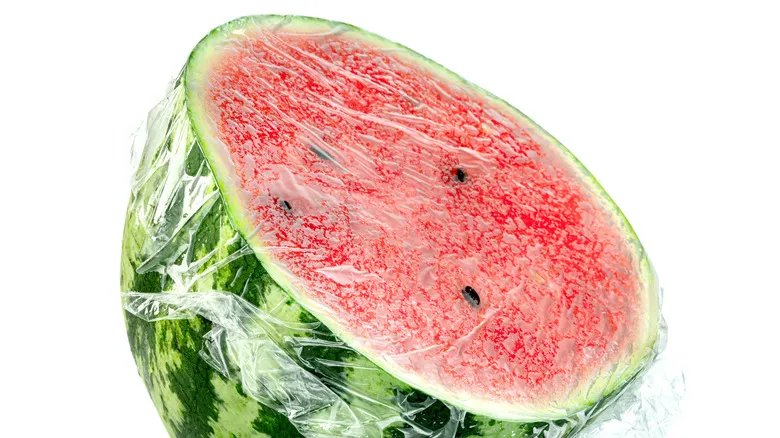
After slicing your watermelon, be sure to cover the exposed end with plastic wrap. This material acts as a barrier, making it difficult for debris and microorganisms to penetrate, which helps slow down the spoilage of your fruit. Additionally, it prevents the watermelon from losing moisture or absorbing unwanted flavors from the refrigerator.
If you prefer an eco-friendly option, consider using reusable silicone stretch wraps, silicone bowl covers, or even shower caps designed for food. You can continue to cut off pieces as needed, reducing the exposed surface area, and then re-cover the remaining fruit with plastic. However, using fresh wrap is the most effective way to avoid contamination, so either wash your plastic wrap (yes, it can be done) or use a clean reusable alternative.
Keep in mind that no expert recommends simply tossing your cut watermelon into a plastic shopping or garbage bag, as some Chowhound writers may have done in their youth, so it's best to avoid that practice.
10. Cube and store it in an airtight container
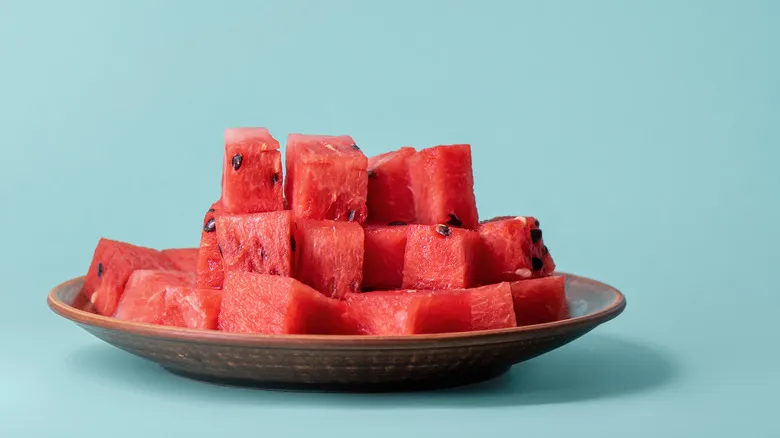
If you’d like, you can slice your watermelon completely, making it convenient for you and your family to enjoy over the next few days with minimal preparation. Cut watermelon can be stored in the refrigerator for about five days.
Keep in mind that this five-day timeframe assumes you place the melon in an airtight container. Many microorganisms can thrive in cold conditions as long as they have food. While leaving food uncovered may not lead to food poisoning, exposure to oxygen can accelerate the fruit's deterioration. Always opt for a tightly sealed storage container, like a glass jar with a rubber seal or a Ziploc bag.
Additionally, if you're already cutting up watermelon, consider creating more fun shapes instead of just simple cubes. If you’re open to keeping the rind on, you can cut the watermelon into triangles or sticks for easy snacking without utensils. Alternatively, you can slice the melon into 1-inch thick rounds and use a cookie cutter to create fun shapes like hearts or stars.
11. Drain the juice periodically
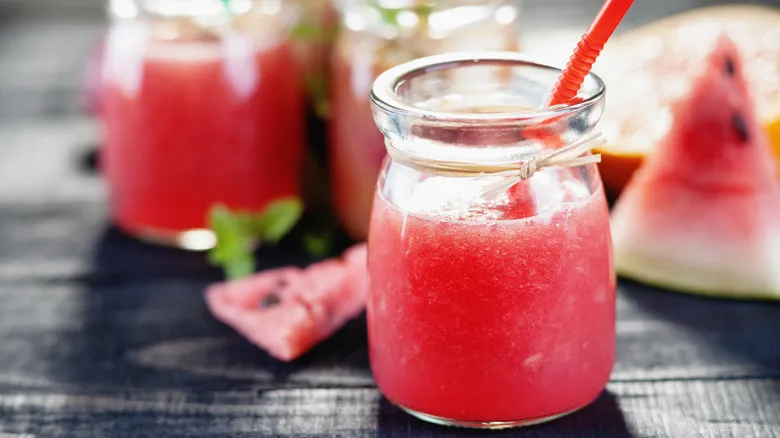
After cutting up watermelon, juice will gather in your container and soften the flesh as it pools at the bottom. To keep your fruit fresher, drain the juice every few days and repurpose it. The good news is that drinking the juice is nearly as beneficial as eating the fruit itself (with a slight loss of fiber). It's incredibly tasty and packed with water, fiber, vitamins, and minerals, making it a fantastic choice for summer.
Watermelon juice can be stored in the fridge for about four days. However, over time, the liquid may separate from the small pieces of flesh. This separation is less noticeable in juice drained from cut melon compared to juice made in a blender or juicer, but it can still happen. If you notice this, don’t worry—it's completely normal. Just give the juice a good shake to mix it back together.
If you're bringing watermelon to a party and want it to stay fresh, try placing an upside-down plate at the bottom of a bowl or dish, then arrange the watermelon on top. This way, as the juice drips down, it will collect beneath the domed plate, keeping it away from the fruit.
12. Freeze, in a single layer, if necessary
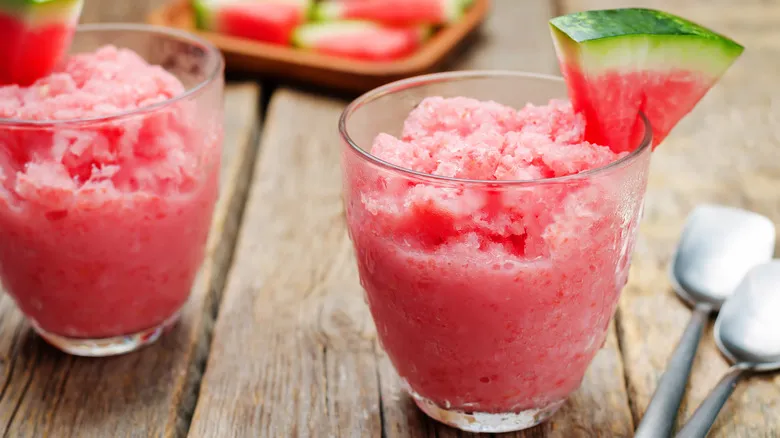
At times, it can be challenging to consume all the fruit, particularly those enormous melons that appear at the end of summer. Don’t worry about the leftovers; freezing them is a great option. Watermelon, in particular, freezes nicely and can last between nine to twelve months. Just be sure to remove the rind and seeds before cutting the flesh into cubes.
When it comes to freezing melon, it might be tempting to toss the cubes into a freezer bag and call it a day. However, if you lump all the pieces together, they will freeze into a solid block, which isn’t ideal for later use. Instead, spread the melon cubes in a single layer on a cookie sheet until they are completely frozen. To make removal easier, consider using a silicone mat, wax paper, or parchment paper, although the latter can be a bit tricky for easy extraction. From my experience, silicone mats that fit the size of the cookie sheet are the most convenient for both removal and cleanup, plus they are the most eco-friendly option—it's a win-win! Once the melon is frozen, transfer it to a freezer-safe bag or container to ensure maximum shelf life.
Keep in mind that watermelon doesn’t thaw well. Like all fruits, it will come out of the freezer soft and juicy because the freezing process damages the structure of its cells. However, this is perfectly fine, as the watermelon can be transformed into delicious smoothies, popsicles, sorbets, and frozen granitas.
13. Make watermelon ice cubes
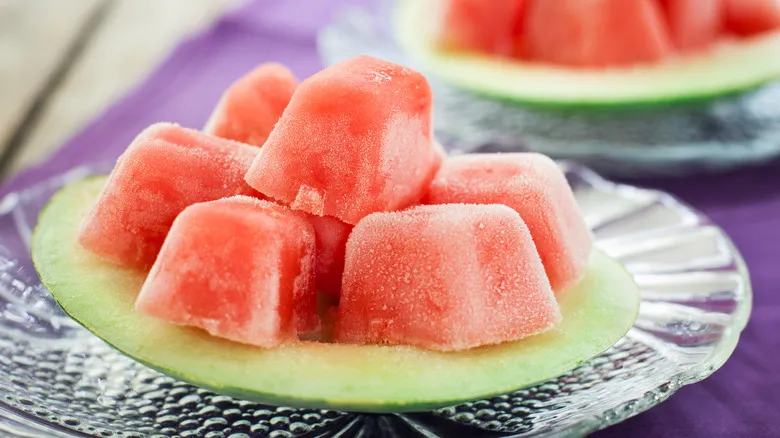
What could be cuter than vibrant pink ice cubes made from watermelon? Nothing, that's for sure! Fortunately, making them is a breeze. Just blend watermelon until it turns into a smooth puree, then pour it into ice cube trays and freeze. If you like, you can enhance the flavor of the blended watermelon with ingredients like honey, lemon juice, sugar, or mint leaves. It's also fun to get creative with the shapes—try freezing them as little hearts, stars, circles, or even unicorns instead of the usual cube.
If you don’t want to go through the hassle of making ice cubes and your watermelon is already too soft to freeze in cubes or slices, simply blend it and pour it into a bag for freezing. Just remember to leave some space at the top of the bag to allow for expansion in the freezer.
Blended watermelon juice can last for about two months if stored properly. Therefore, it’s a good idea to transfer your ice cubes from the trays into a bag for easier storage once they’re frozen.
14. Identify rotten watermelon
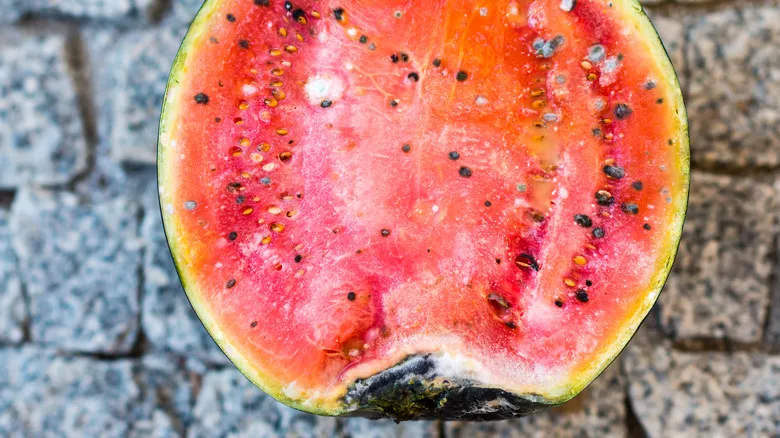
A spoiled watermelon isn't just unpleasant in flavor; it can also pose serious health risks due to foodborne illnesses. While it can be disheartening to find a watermelon starting to spoil, it's best not to take any risks by attempting to salvage and consume it. Moldy fruit can trigger allergic reactions and respiratory issues, as noted by the USDA. If you notice any visible mold on your watermelon, dispose of it immediately.
What if there’s no mold? Other indicators can still suggest that your watermelon has gone bad. If it emits a foul odor, appears odd or slimy, tastes sour or fizzy, or has dark spots, it's best to toss it in the compost. If you purchased pre-cut watermelon in a container, it may still be safe to eat after the best-by date, but you should carefully check for the aforementioned signs of spoilage. Ideally, you shouldn't wait more than five days to consume cut watermelon.
Recommended
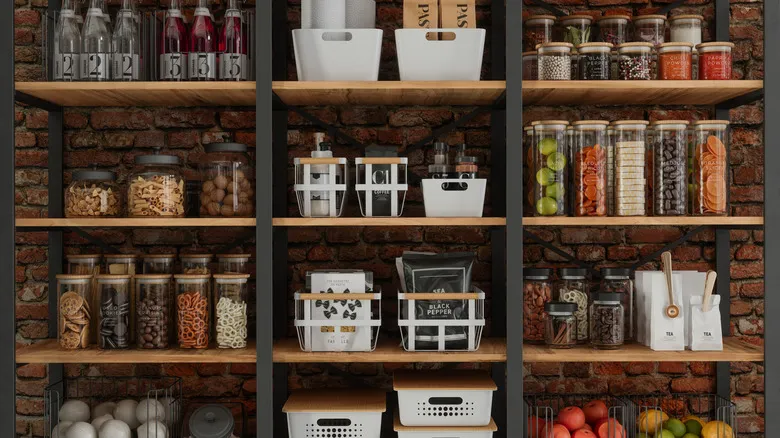
12 Foods That Don't Last In Storage Like You Think
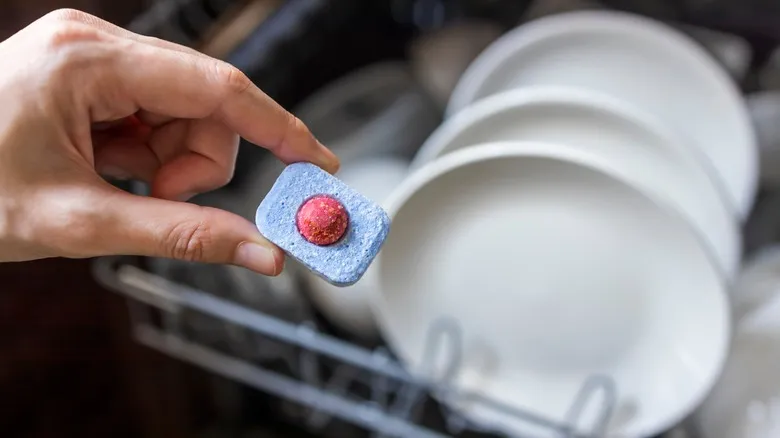
Grab A Dishwasher Tablet If You Want The Cleanest Stove Door Ever

The Reason Your Glassware Is Cloudy (And How To Fix It)

Effortlessly Clean Old Oven Grime With One Fresh Ingredient
Next up

